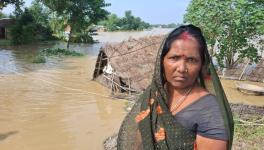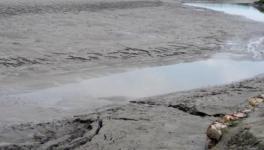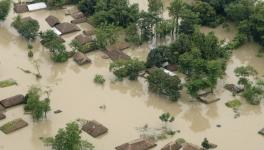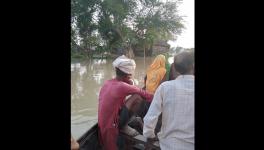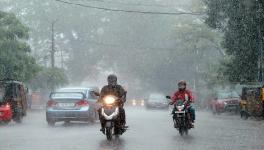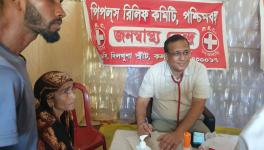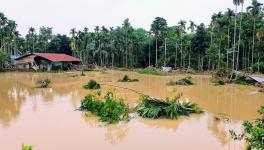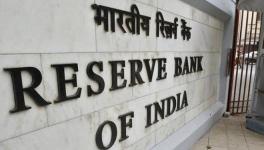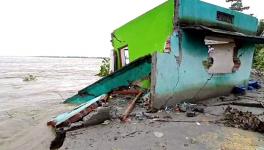2017: Year of Floods in India
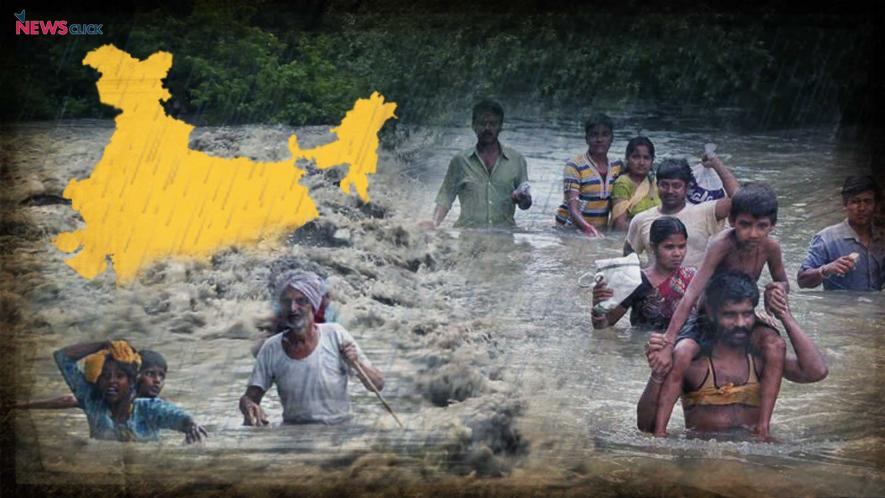
Newsclick Image by Nitesh Kumar
This year has seen the highest recorded rainfall in quite some time. Rainfall records have broken in different regions of the country, and all over the world. The year has seen a spate of extreme climate events, and their toll on life and property has been devastating. India, particularly, has witnessed floods in nine states. Monsoons this year have been heavy, and the damage caused by flooding unprecedented.
India has seen massive flooding in Bihar, West Bengal, Gujarat, Assam, Arunachal Pradesh, Nagaland, Manipur, Odisha, and Jharkhand. The city of Mumbai is still under torrential rain, and floods there had claimed 14 lives till the end of August.
Climate scientists all over the world have attributed the cause of this heavy flooding to both climate change as well as rapid and unplanned urbanisation. Floods have affected neighbouring countries of Nepal, Bangladesh, and Pakistan as well, and the death toll in South Asia is currently estimated to be about 1,200, with 40 million people affected.
In Bihar, one of the worst affected states, rainfall patterns have seen a dramatic shift. The month of August saw very high rainfall this year. Last year, however, rainfall in August was much lower than expected. The departure in rainfall from the expected amount is quite different this year and last year in the 19 flood hit districts of Bihar.
Global warming leads to a rise in temperature, which causes sea surfaces to be hotter. This results in more moisture in the atmosphere, and thus causes heavier rainfall. The ability of the atmosphere to hold moisture is directly impacted from an increase in temperature. For every half a degree celsius in warming, there is about a 3% increase in atmospheric moisture content. This phenomenon is defined in the Clausius-Clapeyron equation. So while all of this causes heavier rains, the poor infrastructure and planning of rapidly expanding urban spaces leads to wide scale loss of life and property. Cities lack proper drainage facilities. They have expanded into marshes, and wetlands, and other such areas which absorb water.
Rising temperatures also lead to melting of glaciers, such as the ones in the Himalayas. This causes an increase in the water levels, and consequently an increase in the risk of flooding.
The worst affected by these climate change fuelled disasters are the poor. Informal settlements often develop in sites which are under greater threat of flooding. These settlements also have weaker stability and no proper drainage facilities.
In Gujarat, the floods impacted 6.44 lakh farmers in 17 districts. The crop damage is estimated to be worth Rs 867 crore. In Assam, at least 160 people died, and 61,923 people had to be displaced. In West Bengal, 1.67 lakh people had to be accommodated in relief camps, and at least 48 people lost their lives.
Saleemul Huq, director of the International Centre for Climate Change and Development in Dhaka, Bangladesh, was quoted by The Guardian saying flooding will worsen. “This is what we can see happening already, with rainfall patterns becoming more erratic and unpredictable. The scientific consensus seems to be that while the overall precipitation across the entire year is not likely to go either up or down significantly due to climate change, the pattern of rainfall will change significantly with greater precipitation in the monsoon season and less in the dry season. Paradoxically, this will probably lead to more flooding in the wet season and more droughts in the dry season, even if the overall amount of rainfall across the year does not change very much.
“The bottom line seems to be that we have already entered the Anthropocene era, in which human activities have cumulatively resulted in changing global weather patterns as well as other global phenomenon such as forest fires and sea level rises.”
Third world countries, which are responsible for a fraction of the CO2 emissions causing global warming, face the brunt of its consequences as extreme climate events are seen largely in the tropics. So while the leaders of the free world continue debating weather global warming is even real, people continue losing their lives. Some scientists say it may already be too late to reverse the impact of global warming. Very few, however, seem to be bothered to even try.
Disclaimer: The views expressed here are the author's personal views, and do not necessarily represent the views of Newsclick.
Get the latest reports & analysis with people's perspective on Protests, movements & deep analytical videos, discussions of the current affairs in your Telegram app. Subscribe to NewsClick's Telegram channel & get Real-Time updates on stories, as they get published on our website.









